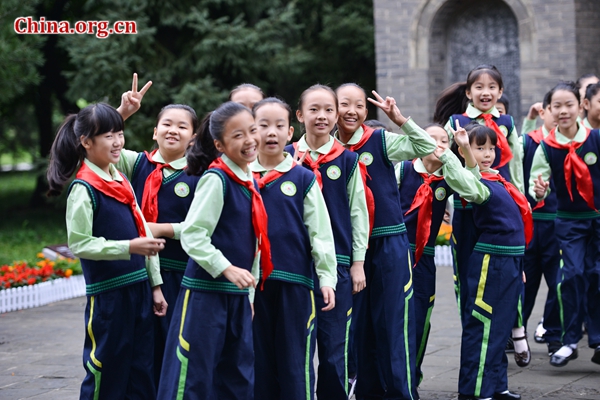Education

The Chinese Constitution requires that all Chinese children receive nine years of compulsory education, including six years of primary school and three years of junior middle school.
Higher education has developed substantially in the fifty years since the founding of the People's Republic of China. A three-tier degree system, offering bachelor's, masters, and doctorate degrees, was instituted in 1981. Following a series of reforms, a diverse, multi-level system of higher education has been initiated, encompassing a full range of subjects and suited to the needs of the national economy and social development. China's institutions of higher learning include comprehensive universities and specialized universities or institutes. Most specialized programs take three years, with a small number taking two years; comprehensive programs generally take four years, with a small number taking five or six years. China has a number of famous universities, including Peking University, Tsinghua University, Fudan University, Nankai University, Beijing University of Science and Technology, Jilin University, Wuhan University, and Nanjing University. After completing their studies, some college graduates enter the job market, while others may pursue a second bachelor's degree or enter a master's or doctoral program. People who have received a doctorate may choose to continue their studies abroad. Students face tests at every level of China's educational system, and only those who surmount these hurdles are granted the opportunity to pursue a higher level of education.
China's universities produced 829,100 graduates with bachelors degrees between 1979 and 1997, 2.58 times as many as during the previous thirty years. Universities and research institutes awarded a total of 20,514 doctorates and 285,943 masters degrees between 1981 and 1996. Statistics indicate that there were 1,071 universities in China in 1999, and that the number of university students rose from 6.43 million in 1998 to 12.14 million by 2001, an increase of 89%. During this period, the number of master's degree students rose from 150,000 to 290,000, an increase of 93%, and the number of doctoral students rose from 45,000 to 77,000, an increase of 71%.
China's institutions of higher learning have produced a large amount of advanced scientific research and technical applications. As of the end of 2001, universities had won 250 State awards in the natural sciences, 50% of the national total; 1,002 State awards for technical inventions, 34% of the national total; and 2,100 State awards for advances in science and technology, 26% of the national total. Universities account for over 60% of all scientific and technical studies published domestically and abroad each year.

